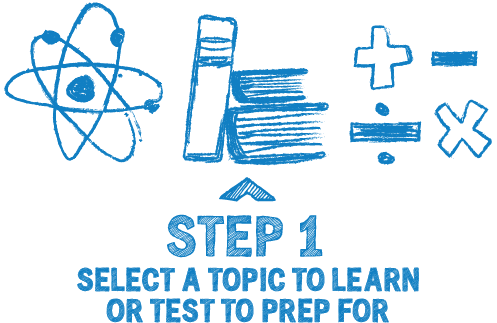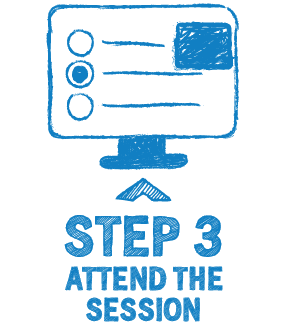Net of a Cylinder
Grade 6 Math Worksheets
A cylinder is a three-dimensional geometric shape with two parallel bases that are congruent circles and a curved lateral surface connecting the bases. The height of the cylinder is the perpendicular distance between the two bases.
In this article, we will cover:
- Calculating the Net of a Cylinder
- Solved Examples
- FAQs
Net of a Cylinder - Grade 6 Math Worksheet PDF
This is a free printable / downloadable PDF worksheet with practice problems and answers. You can also work on it online.
|
|
Untimed |
|
Sign up with your email ID to access this free worksheet.
"We really love eTutorWorld!"
"We really love etutorworld!. Anand S and Pooja are excellent math teachers and are quick to respond with requests to tutor on any math topic!" - Kieran Y (via TrustSpot.io)
"My daughter gets distracted easily"
"My daughter gets distracted very easily and Ms. Medini and other teachers were patient with her and redirected her back to the courses.
With the help of Etutorworld, my daughter has been now selected in the Gifted and Talented Program for the school district"
- Nivea Sharma (via TrustSpot.io)
The net of a cylinder is a two-dimensional flat representation of the three-dimensional shape of a cylinder. It is created by cutting and unfolding a cylinder along its lateral surface. The net of a cylinder shows the shape of the lateral surface and the two bases of the cylinder, and can be used to visualize the cylinder or to determine its surface area.
Calculating the Net of a Cylinder
The net of a cylinder is a 2-dimensional representation of the 3-dimensional shape. It can be used to create the cylinder by folding along the lines.

To calculate the net of a cylinder, you’ll need to know its height and the length of its circumference (i.e. the distance around the base). Then, you’ll divide the circumference by the number of sides you want the net to have (e.g. 4, 6, 8, etc.).
This will give you the length of each side of the regular polygon that forms the base of the cylinder. Then, use this length to create a regular polygon with the number of sides you’ve chosen. Connect the adjacent vertices of the polygon to create a flat shape, and then extend each side to form the height of the cylinder.
“There have been times when we booked them last minute, but the teachers have been extremely well-prepared and the help desk at etutorworld is very prompt.
Our kid is doing much better with a higher score.”
6th Grade Tutoring
eTutorWorld offers Personalized Online Tutoring for Math, Science, English, and Standardised Tests.
Our Tutoring Packs start at just under $22.49 per hour, and come with a moneyback guarantee.
Schedule a FREE Trial Session, and experience quality tutoring for yourself. (No credit card required.)
Net of a Cylinder Solved Examples:
Example 1: A cylinder with a height of 10 cm and circumference of 20 cm, with 4 sides.
Solution:
Step 1 – Divide the circumference (20) by the number of sides (4) to get the length of each side of the base polygon: 20/4 = 5
Step 2 – Create a square with sides of length 5
Step 3 – Connect adjacent vertices to form a flat shape
Step 4 – Extend each side to form the height of the cylinder (10)
Example 2: A cylinder with a height of 15 and circumference of 30, with 6 sides.
Solution:
Step 1 – Divide the circumference (30) by the number of sides (6) to get the length of each side of the base polygon: 30/6 = 5
Step 2 – Create a hexagon with sides of length 5
Step 3 – Connect adjacent vertices to form a flat shape
Step 4 – Extend each side to form the height of the cylinder (15)
Do You Stack Up Against the Best?
If you have 30 minutes, try our free diagnostics test and assess your skills.
Net of a Cylinder FAQS
What is a net of a cylinder?
A net of a cylinder is a 2-dimensional representation of the 3-dimensional shape that can be used to create the cylinder by folding along the lines.
How do you calculate the net of a cylinder?
To calculate the net of a cylinder, you’ll need to know its height and the length of its circumference. Divide the circumference by the number of sides you want the net to have (e.g. 4, 6, 8, etc.), to get the length of each side of the regular polygon that forms the base of the cylinder. Connect the adjacent vertices of the polygon to create a flat shape and then extend each side to form the height of the cylinder.
What are the dimensions required to calculate the net of a cylinder?
The dimensions required to calculate the net of a cylinder are the height and the length of its circumference.
What is the formula for calculating the net of a cylinder?
The formula for calculating the net of a cylinder is: Length of each side of the base polygon = Circumference ÷ Number of sides.
What is the purpose of a net of a cylinder?
The purpose of a net of a cylinder is to represent a 3-dimensional shape in a 2-dimensional format, which can be used to create the cylinder by folding along the lines.
How many sides can a cylinder net have?
A cylinder net can have any number of sides, but it’s usually 4, 6, or 8 sides.

Gloria Mathew writes on math topics for K-12. A trained writer and communicator, she makes math accessible and understandable to students at all levels. Her ability to explain complex math concepts with easy to understand examples helps students master math. LinkedIn
Affordable Tutoring Now Starts at Just $22.49
eTutorWorld offers affordable one-on-one live tutoring over the web for Grades K-12. We are also a leading provider of Test Prep help for Standardized Tests (SCAT, CogAT, MAP, SSAT, SAT, ACT, ISEE, and AP).
What makes eTutorWorld stand apart are: flexibility in lesson scheduling, quality of hand-picked tutors, assignment of tutors based on academic counseling and diagnostic tests of each student, and our 100% money-back guarantee.
Whether you have never tried personalized online tutoring before or are looking for better tutors and flexibility at an affordable price point, schedule a FREE TRIAL Session with us today.
*There is no purchase obligation or credit card requirement
Grade 6 Science Worksheets
- Inquiry process
- Nature of Science
- Scientific Inquiry
- Inquiry, Analysis and Problem Solving
- Ethical Practices
- Science and Society
- Biotic and Abiotic Factors
- Impact of Organisms
- Adaptation
- Spheres of Earth
- Natural Resources
- Environmental Issues
- Conservation of Earth
- Understanding Technology
- Abilities To Do Technological Design
- Structure of Earth
- Solar System
- Rocks and Fossils
- Earth Systems
- Plate Tectonics
- Evolution
- Magnetic Field of Earth
- Geologic Time
- Materials and Processes That Shape a Planet
- Astronomy
- Ecology
- Energy
- Kinetic and Potential Energy
- Energy Transfer
- Matter and its Structure
- States of Matter
- Physical and Chemical Changes
- Force and Motion
- Electricity and Magnetism
- Wave Interactions
- Sound
- Light
- Introduction to Life Science
- The Origin & History of Life On Earth
- Plant and Animal Cells
- Parts of a Cell
- The Cell Cycle
- How Living Organisms Get Energy
- Classification of Organisms
- How Plants Grow & Reproduce
- The Human Respiratory System
- The Human Cardiovascular System
- The Human Digestive System
- The Human Endocrine Systems
- The Human Nervous System
- The Human Muscular System
- The Human Skeletal System
IN THE NEWS

Our mission is to provide high quality online tutoring services, using state of the art Internet technology, to school students worldwide.
Online test prep and practice
SCAT
SSAT
ISEE
PSAT
SAT
ACT
AP Exam
Science Tutoring
Physics Tutoring
Chemistry Tutoring
Biology Tutoring
Math Tutoring
Pre-Algebra Tutoring
Algebra Tutoring
Pre Calculus Tutoring
Calculus Tutoring
Geometry Tutoring
Trigonometry Tutoring
Statistics Tutoring
Quick links
Free Worksheets
Fact sheet
Sales Partner Opportunities
Parents
Passive Fundraising
Virtual Fundraising
Our Expert Tutors
Safe and Secure Tutoring
Interactive Online Tutoring
After School Tutoring
Elementary School Tutoring
Middle School Tutoring
High School Tutoring
Home Work Help
Math Tutors New York City
Press
©2022 eTutorWorld Terms of use Privacy Policy Site by Little Red Bird
©2022 eTutorWorld
Terms of use
Privacy Policy
Site by Little Red Bird










